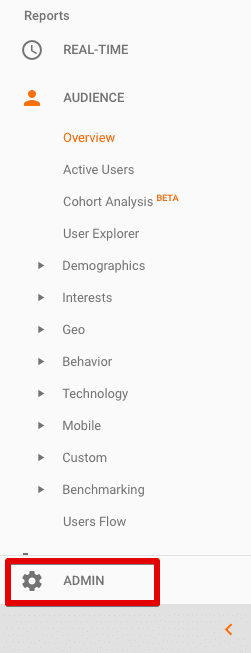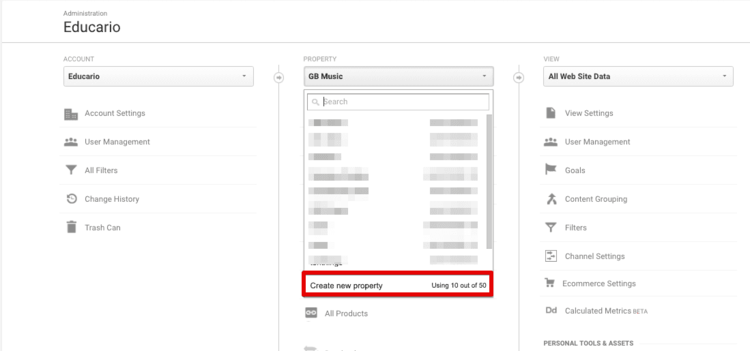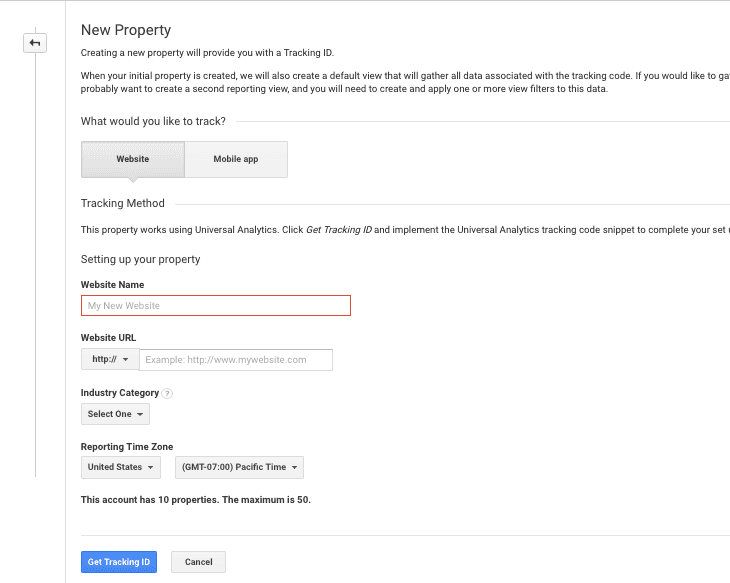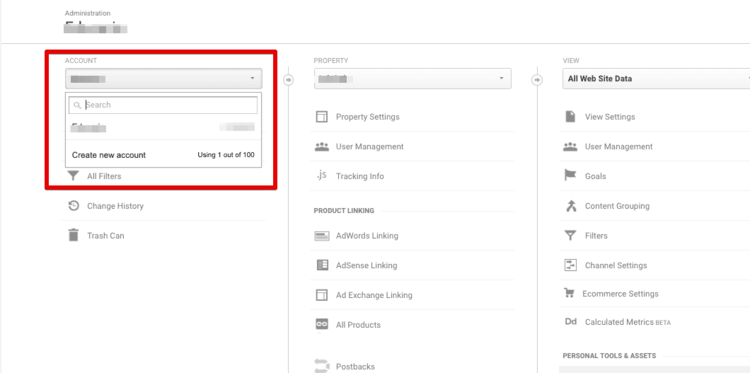Add Your Website to Google Analytics: A Comprehensive Guide
Are you curious about the performance of your website? Yearning to decipher who’s visiting your virtual space, their behavior, and their interaction with your site? Don’t worry, Google’s analytical solution is a perfect tool that can furnish you with detailed insights about your website’s metrics. However, you’ll first need to master how to enlist your site on their platform.
This article aims to guide you through the effective methodology of seamlessly integrating your website into Google’s analytical system. Getting the statistics you need has never been easier! Understanding these insights will not only help you make data-driven decisions but also will enhance the overall performance of your site.
The process of linking your website to Google’s analytical platform may seem complex for some, especially the non-tech savvy users. But with the right guidance, you’ll discover it’s a straightforward procedure that requires just a few steps. By the end of this detailed guide, you’ll become adept at executing the process with relative ease.
Let’s dive into this hands-on guide to unveil the tried-and-true strategies for successfully integrating your site into Google’s analytical solution.
Appreciating Google Analytics: Essential Advantages for Enterprises
Google Analytics is undeniably one of the most powerful tools an enterprise can leverage to understand its online presence. Its ability to track and analyze the behavior of website visitors provides businesses with valuable insights that can be used to optimize website performance, drive growth, and increase profits.
When used correctly, this cutting-edge tool can provide critical data on where traffic is coming from, the behaviour of visitors on the site, and what kind of content keeps them engaged. Irrespective of the size of the business, these insights are essential to shape strategic decisions, enhance the effectiveness of marketing campaigns, and improve user experience.
Superior Benefits of Google Analytics for Businesses
Enhanced Decision Making: Google Analytics allows businesses to make data-driven decisions. By understanding who your audience is, what they are interested in, and how they interact with your website, you can make informed decisions about your business strategies.
Optimization of Marketing Strategies: Google Analytics provides extensive data about the success of your marketing campaigns. Knowing which campaigns are driving traffic and leading to conversions allows you to adjust your strategies and invest more in what works.
- Improved User Experience: Google Analytics provides insights on site performance and user behaviour on the site. By analyzing this data, businesses can tweak their website design and content to enhance the user experience.
- Reduce Bounce Rate: Google Analytics can help identify the pages with high bounce rates. Armed with this knowledge, businesses can optimize these pages to increase engagement and conversions.
In conclusion, incorporating Google Analytics into your business strategy gives you a powerful tool to optimize your digital presence. It is an indispensable tool that offers valuable insights, enabling businesses to enhance their marketing effectiveness, improve user experience, and ultimately drive growth.
The Benefits of Using Google Analytics for Your Online Presence
Having a sense of certainty about your website’s performance is crucial for success in today’s digital landscape. Luckily, tools like Google Analytics can provide invaluable insights about your online properties’ interactions with visitors. It’s essential to identify why Google analytics is beneficial for your web platform.
Every click or interaction on your website turns into a vital piece of information that can unfold the user engagement level, conversion rates, bounce rates, etc. Google Analytics utilizes these data points to generate comprehensive reports, providing an integral view of your website’s metrics.
Rationalizing the Application of Google Analytics
Understanding Your Audience: Google Analytics provides insights into your audience – who they are, where they come from, the devices they use, their preferences, and so forth. This information is paramount to building audience-centric strategies that aid in the growth of both reach and engagement.
Monitoring Website Performance: By using Google Analytics, you’ll know the pages with the most visits on your website, the time spent by visitors on each page and the pages that are causing visitors to leave – hence giving you insights on how to improve your website.
- Enhancing Marketing Strategies: Google Analytics provides useful data about the success of your marketing campaigns. This includes information about user demographics, the performance of various marketing channels, and conversions, all of which can be used to tweak and optimize your marketing efforts.
- Data-Driven Decisions: Decisions backed by hard data are often more accurate and effective. Google Analytics provides the necessary data to make informed decisions regarding website changes, marketing campaigns, and more.
Implementing Google Analytics does not just give you mere statistics. It’s about gaining insights, making data-centric decisions, enhancing user experience, and ultimately amplifying your website’s performance. As seen from these benefits, employing Google Analytics can revolutionize your approach to digital marketing and website management.
Guide for Setting Up Website Google Analytic
Implementing on your website Google Analytics is one of the most important steps to stay ahead in the digital marketing game. It not only lets you understand your audience better but also helps you make informed marketing decisions. If you are new to it, worry not! We are here to walk you through the process of creating a Google Analytics account.
This step-by-step guide will take you down the road of establishing your very own Google Analytics account in an easy and hassle-free manner. So, whether you have a business website, personal blog, or an online store, keep reading to uncover the secrets of becoming a pro at utilizing the power of Google Analytics.
Step-by-Step Procedure to Set Up a Google Analytics Account
Before you start, ensure you have a primary Google account that you use for other services like Gmail, Google Drive, Google+, or YouTube. If you don’t have one, your first step is to create a new Google account.
- Visit the Google Analytics Homepage: To start setting up Google Analytics, go to the website and click on the ‘Start measuring’ button.
- Create an Account: Enter the account name you’d like to use. It can be your own name or your company name. A Google Analytics account can have access to multiple websites.
- Set Up a Property: To set up a property, enter the website name, its URL, industry category, and reporting time zone. It’s essential to get the URL right for accurate data reports.
- Set Up a Reporting View: This is an optional step but recommended to customize the way your data is presented in the reports.
- Get Your Tracking ID: After filling in your details, click on ‘Get Tracking ID’. Now, Google Analytics will generate a unique tracking ID and tracking code for your website.
- Insert the Tracking Code to Your Website: The last step involves placing the tracking code on every page of your website. This can be done by copying the script and pasting it before the closing </head> tag on each page.
By following these steps, you can add internet data analysis to your site via Google Analytics. Regularly monitor your Google Analytics statistics to observe user behavior and make any required alterations to your marketing strategies based on data-driven insights. Happy analyzing!
| Aspect | Description | Google Analytics Add site | Benefits | Considerations |
|---|---|---|---|---|
| Process Overview | Google Analytics Add site involves several steps to integrate tracking code and set up the property for data collection. | – Account creation and setup in Google Analytics. – Property setup and tracking code integration. | – Access to in-depth website performance insights. – Enables tracking of user interactions and behavior. | – Following a structured setup process is crucial. – Proper configuration of tracking code is essential. |
| Google Analytics Account | The process starts with creating a Google Analytics account if you don’t have one. You need a Google account to access Google Analytics. | – Register for a Google Analytics account using a Google account. | – Access to a wide range of Google Analytics features. – Management of multiple websites from one account. | – Security of the Google account is essential. – Single Google account can manage multiple websites. |
| Property Setup | After setting up an account, the next step is to create a property for your website, which includes adding the website URL and configuring data sharing settings. | – Create a new property and specify website URL. – Configure data sharing options. | – Separates data for different websites or apps. – Control over data sharing for analysis. | – Property configuration should match website type and goals. – Select data sharing options according to privacy preferences. |
| Tracking Code Integration | To collect data, you need to integrate the Google Analytics tracking code into your website’s HTML. This code tracks user interactions and sends data to Google Analytics. | – Access tracking code under property settings. – Implement tracking code on every page of the website. | – Accurate data collection for analysis. – Tracks user behavior, events, and conversions. | – Ensure correct placement of tracking code on all pages. – Regularly check for code updates. |
| Data Collection and Analysis | Once the tracking code is integrated and data starts flowing, Google Analytics provides insights into website performance, user behavior, and more. | – Data collected and available for analysis in Google Analytics reports. – Access to a variety of analytics features. | – Informed decision-making for website optimization. – Improved user experience based on data insights. | – Regular monitoring of data is crucial for timely adjustments. – Understanding and interpreting data is essential for making informed decisions. |
| User Permissions | Google Analytics allows you to grant different levels of access to users, such as administrators, editors, and viewers, for collaboration and management. | – Set user permissions to control access to Google Analytics data. – Assign roles like administrators, editors, or viewers. | – Collaborative management of website data. – Restricted access for data security and privacy. | – Grant permissions based on job roles and responsibilities. – Regularly review and update user access levels. |
Integrating Your Site with Google Analytics
Google Analytics is a powerful tool which enables you to track your web traffic and gain valuable insights about your audience. It provides myriad of features including audience demographics, user behaviour, pageviews, bounce rate and much more. Although it might seem like integrating a website Google Analytics is complex, it can actually be done with a few straightforward steps.
Before you start the process of connecting your site to Google Analytics, make sure you have a Google account. If you don’t have one, you can create it for free. Once the account is set up, you can then sign in to Google Analytics and start the process of adding a new property, in this case your website.
Steps to Link Your Site to Google Analytics
- First, log in to your Google Analytics account. After this, click on “Admin” at the bottom left of the page.
- You should now see three columns. In the first column, ensure that your account is selected. In the second column, click on “Create Property”. Then fill in your website details.
- Once you have filled in the details, scroll down and click on “Show advanced settings”. Here, toggle the switch “Create a Universal Analytics property” and fill in your website URL again. Choose the option “Create both a Google Analytics 4 and a Universal Analytics property”.
- Finally, click on “Next” and complete the rest of the steps by providing information about your business. Once you have finished, click on “Create”. You will then be given a tracking ID and code. Insert this code into your website’s code, specifically in the head section of your site.
Remember, it will not start tracking data immediately. It might take up to 24 hours for data to appear in your Google Analytics account. Now that you have successfully connected your website Google Analytics, you can kick back and watch as data from your website begins pouring in, providing you with actionable insights to help improve your site and marketing strategy.
Implementing Your Unique Tracking Code for Analytics On Your Website
To fully optimize the functionality of Google Analytics, every page of your website needs to have a unique identifying code implemented. This distinctive code, often referred to as a tracking ID, allows Google Analytics to gather data from your website and provide you with valuable insights about your website’s traffic.
The process of incorporating this tracking ID to your website requires a meticulous approach to ensure precise data analysis. The gotcha is to be careful not to miss out any webpage to avoid gaps in data analysis. Let us go through step by step to do this correctly.
The Procedure of Embedding the Analytics Code
Retrieving the tracking code from Google Analytics: Upon creating an account on Google Analytics, you’ll obtain a unique tracking ID embedded in a JavaScript code. This is known as the Universal Analytics tracking code which you need to copy and save for the next step.
- Log into your Google Analytics Account.
- Under ‘Property’, select ‘Tracking Info’.
- This will display Tracking Code.
- Copy the entire Tracking ID script.
Implementing the tracker on your website: It’s essential to ensure every webpage of your site has the Analytics code inserted. Most websites have a common header or footer where this code can be inserted. It will automatically apply to every page.
- In your website’s backend, find the common footer or header file.
- Paste the copied Analytics code before the closing ‘head’ HTML tag.
- Save changes.
Well done! You’re all set to start comprehending robust data about your website’s users and their behaviors. This invaluable information will empower you to make data-driven decisions to improve your website’s user experience and conversion rate.
Controlling Google Analytics Settings: Key Aspects
When running a website, it’s crucial to understand and analyze the web traffic which contributes majorly to the site’s success. One of the widely utilized tools for this is Google Analytics. Being familiarized with Google Analytics and its many vital features is beneficial, particularly in controling its settings effectively.
One can use Google Analytics to collect and assess information regarding website visitors. It provides insights on where traffic comes from, what pages are visited most, and how visitors behave on the site. Before diving into these data, it’s essential to grasp how to manage the settings of Google Analytics.
- Account Setup: After integrating Google Analytics into a website, it’s important to correctly set up the account. This allows users to manage multiple properties or websites under one account.
- Property Settings: In Google Analytics property is a website. The property settings allow users to modify the data collection, tracing, and data retention for each website separately.
- View Settings: It is possible to create multiple views for a single property. Views represent subsets of data from a single property. The view settings are where you can filter the data to be included in the reports.
- Data Import: Google Analytics allows users to upload and combine data from different sources. This can be very useful for comparing and modeling data.
- User Management: User management lets users add and remove users, and assign permissions. This is particularly helpful when working with a team on a project.
- Tracking Info: This provides the tracking code to be added to a website, defines the tracking method, and manages data collection.
- Product Linking: Linking Google Analytics with other Google products, like Google Ads or Google Search Console, allows for enhanced analysis and reporting capabilities.
Managing these settings efficiently can substantially enhance the information obtained from Google Analytics, providing valuable insights to help drive the success of any website.
Deciphering Reports and Insights in Google Analytics
Google Analytics is a powerful tool that provides detailed insights on how well a website is performing. This tool generates comprehensive reports that are crucial in understanding your website’s traffic patterns and user behavior. The main aim is to help you identify what’s working, what needs improvement, and where to invest your time and resources for better results.
There are multiple report types available in Google Analytics – each serving a unique purpose. It’s important to comprehend these reports and insights effectively in order to harness their full potential. Breaking down these insights might seem overwhelming initially, but with a better understanding of the functionality, entrepreneurs and marketers can extract valuable data from these reports.
The Various Reports Available in Google Analytics
In Google Analytics, the reports are categorized into five main sections: Real-Time, Audience, Acquisition, Behavior, and Conversions. Let’s break down each of them:
- Real-Time: This is a dynamic report that provides information on the activities happening on your site at the very moment. It can monitor active users, their geographical location, and the content they are engaging with.
- Audience: This report provides insights about the users who are visiting your website. It can vary from demographics and interests to behavior and technology.
- Acquisition: This section gives details on how users are arriving at your site, whether it’s through direct search, keywords, social channels, referrals, or paid advertisements.
- Behavior: Offering snapshots into what users do once they’re on your site, this report includes information on page views, bounce rate, and average session duration.
- Conversions: This crucial report shows if users are completing specific actions such as purchases or signing up for newsletters, indicating the effectiveness of your call-to-action strategies.
Understanding these reports and insights from Google Analytics makes it easier to outline benchmarks and indicators for your site’s success. These rich details can empower you to make informed decisions and strides in your digital journey, taking your site to new heights.
FAQ: How to Add a Website to Google Analytics
What is Google Analytics?
Google Analytics is a free web analytics tool offered by Google that tracks and reports website traffic. This tool allows businesses to analyze their audience, quantify the return on investment for web marketing, and provide insights into user behavior on the site.
How do Google Analytics reports help me to understand more about my audience?
Google Analytics offers a variety of reports like audience behavior, location, demographics, session duration, and bounce rate. These reports help businesses to better understand the behavior of their traffic, identify their target audience, and optimize their strategies accordingly.
What does the “Acquisition” tab in Google Analytics reports show?
The ‘Acquisition’ section in the Google Analytics report shows how your audience arrives at your website. It includes reports that group your traffic source based on Channels (like Organic Search, Direct, Social, etc.), Source/Medium (the specific source and medium), Referrals (websites that link to you) or Campaigns your set up.
How can Google Analytics help me to measure my marketing campaign strategy?
With Google Analytics, you can track the performance of your online marketing campaigns, both organic and paid. The tool allows you to set goals, monitor conversions, evaluate the success of your SEO campaign, measure response to social media marketing, and even analyze the behavior of users from email campaigns.
How do I add Google Analytics 4 (GA4) to my WordPress website?
To add GA4 to your WordPress site, follow these steps:
- Create a new Google Analytics 4 property in your GA account.
- Get the GA4 tracking code.
- Install a GA4 plugin for WordPress or manually add the tracking code to your site.
What is a Google Analytics dashboard, and how can I connect it to my website?
A Google Analytics dashboard is a user interface that displays your website’s performance data. You can connect it by:
- Logging into your GA account.
- Selecting the property and website you want to track.
- Accessing the dashboard where you’ll find various data and reports related to your website traffic.
What are the simple steps for a website to Google Analytics tracking code to a WordPress site?
- Log in to your Google Analytics account.
- Select the account and property.
- Access the tracking code under “Admin.”
- Copy the code.
- In your WordPress dashboard, go to “Appearance” > “Editor.”
- Paste the tracking code into the header section of your site’s template.
Barely realizing How to create a new account and add a new website to Google Analytics?
- Go to the Google Analytics website and sign in with your Google account.
- Click “Sign up” to create a new GA account.
- Follow the setup process to add your website and get the tracking code.
- Install the tracking code on your website to start tracking.
How do I add a new website to Google Analytics account?
To add a website to Google Analytics account:
- Log in to your GA account.
- Click on “Admin.”
- Under the Property column, select “Create Property” and follow the steps to add your new website.
What is a website builder, and how can I use it to create a new website for tracking with Google Analytics?
A website builder is a platform that helps you create websites without extensive coding. To use it with Google Analytics:
- Choose a website builder.
- Design and build your website.
- Integrate Google Analytics by adding the tracking code to your site.
How can I add the Google Analytics code to my website using the GA4 property in Google Analytics?
To add the Google Analytics code using the GA4 property:
- Create a new GA4 property in your Google Analytics account.
- Follow the setup process to obtain the tracking code.
- Insert this code into your website’s HTML or use a plugin for easy integration.
Do I need to create a new Google Analytics account for each website I want to track, or can I use a single account for multiple sites?
You can use a single Google Analytics account to track multiple websites. Simply create separate properties for each site within the same account, making it convenient to manage and access all your analytics data in one place.
How do I connect Google Analytics and Google Tag Manager for better tracking and management of my website data?
To connect Google Analytics and Google Tag Manager:
- Set up Google Tag Manager with your Google Analytics property.
- Create tags for your tracking codes in GTM.
- Use GTM to manage and deploy these tags on your website.
What steps should I follow to add a new website and create a data stream in Google Analytics for 2023?
To add a new website and create a data stream in Google Analytics for 2023:
- Log in to your GA account.
- Click “Admin.”
- Select the property where you want to add the data stream.
- Click “Data Streams” and then “Add stream.”
- Follow the prompts to set up the data stream for your new website.
How can I add a site using Google Analytics 4 (GA4) for tracking purposes?
To add a site using GA4 for tracking:
- Create a new GA4 property for your Google Analytics account.
- Set up a data stream for the site you want to track.
- Follow the provided instructions to add the GA4 tracking code to your website.
Can I also create a new Google Analytics account for additional website tracking alongside my existing Google Analytics account?
Yes, you can create a new Google Analytics account for separate website tracking. Each account can have its own set of properties and tracking codes.
What’s the significance of step 4 in the process of Google Analytics add site?
Step 4 typically involves configuring specific settings or options when adding a website to Google Analytics. The importance of this step can vary depending on the features or setup you want for tracking on your website.
Once you’ve set up a new GA4 property, how do you ensure that it accurately tracks the data on your existing Google Analytics account?
To ensure accurate tracking on a new GA4 property, follow the same steps and configurations used in your existing Google Analytics account. Make sure the tracking code is correctly implemented on your website to collect the desired data.
How do I install Google Analytics on my website if I need to create a new account specifically for that website?
If you need to create a new Google Analytics account for your website:
- Go to the Google Analytics website.
- Sign up for a new account.
- Follow the setup process to create a new property and obtain the tracking code for your site.
What should I do after I click “Create Stream” when adding Google Analytics 4 (GA4) to my website?
After clicking “Create Stream”:
- Follow the subsequent steps to complete the setup, which typically involve setting up tracking, configuring events, and integrating the tracking code into your website.
© PhoenixProject, with full or partial copying of the material, a link to the source is required.





Comments: 0